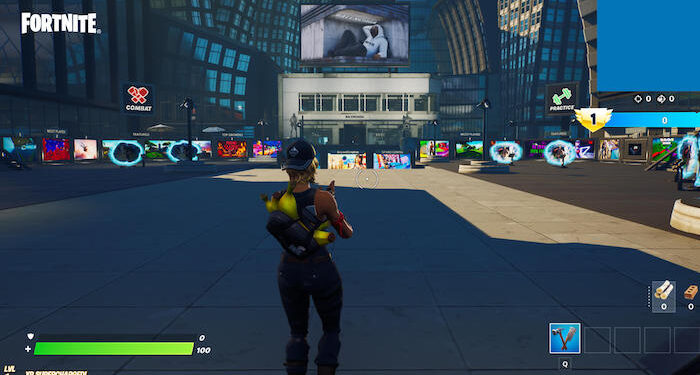Gaming. In some households it’s a muddy word, in some it’s a way for families and friends to connect, and in many households where our younger Gen Zs or Gen Alphas reside, a daily push and pull battle exists on managing screen time.
It’s no secret that the South African gaming industry continues to grow, driven by an increase in smartphone penetration along with our growing youth population with a keen interest in mobile or console gaming (47% of gamers are aged 14 to 28 years).
Globally there are approximately 3.32 billion active video gamers worldwide, with a video game market worth an estimated R9 405 billion as at end 2024.
Comparably, South Africa’s gaming industry was estimated to generate around R5 010 million in revenue, placing us as the third-largest gaming market in Africa, behind Egypt and Nigeria. The overall African gaming market reached R32 billion in 2024. (1’)
Leveraging the gaming space
We know the South African gaming market is huge and growing in both volume and value, we know the African market is huge and we know globally it’s exponential.
But this article is not about South African gaming volumes, it’s about how local South African brands and entrepreneurs can leverage themselves in this gaming space via commerce.
Thinking back, in-gaming purchases are nothing new. From as early as 2019 players have been able to buy branded skins and fashion apparel in the likes of Fortnite, the world-renowned closed gaming platform created and marketed by Epic Games.
We’ve seen some remarkable deliveries from global brands in this world in the past five years. One of my favourites being Balenciaga’s Fortnite Fashion Collection, which showcase luxury fashion in a virtual environment, offering digital apparel for avatars.
Virtual to real world
The clothing range can then be purchased in selected official Balenciaga stores worldwide, or on their owned ecommerce site.
As the virtual world shifts to incorporate more of the real world, platforms like Roblox are fulfilling more than just that promise to play. They are becoming live marketplaces and cultural hubs, where entertainment and shopping merge in completely new ways.
Shopify has recently entered the Roblox universe, facilitating the next wave of online shopping, which might not happen on your favorite e-commerce site, but in the game instead. You might argue that Fortnite already sells digital items, and you’d be right.
But here’s the difference; Roblox is an open platform, whereas Fortnite is a closed game. What that means for marketers is that Fortnite is created and sold by Epic Games or approved partners. It’s a slick and successful model, but it’s tightly curated. Roblox, on the other hand, is a platform where anyone can be a creator, and thus a direct retailer.
Supercharging e-commerce potential
The Roblox integration with Shopify is a doorway to supercharging e-commerce potential. It allows merchants to build virtual storefronts, which means brands can finally sell virtual goods, from avatar clothes to collectibles, and tie them into real-world products.
Imagine buying your avatar a shirt from your favourite local designer in your game and also buying yourself the same one in real life. Suddenly, you’re not just selling in-game items, you’re building a brand. This means that South African teens, local brands, or digital artists can build their own games and design their own merch in Roblox and sell it directly to a global audience as physical apparel.
That’s the twist, that’s the difference, and that is the opportunity opening the doors for youth to build their own brands and get it into the hands of a global audience. It’s a mash-up of gaming, brand storytelling and commerce that appeals to a generation that doesn’t differentiate online from offline.
Open to digital-first experiences
Play is not just entertainment for this generation; it’s social, expressive, and now commercial. By integrating commerce so completely into the game play, they are making transactions feel organic, even delightful.
Young consumers, are already mobile-savvy, having grown up with platforms like TikTok and YouTube, and are increasingly open to digital-first experiences. Roblox provides a new kind of platform where spending, identity and storytelling come together for them. Where Fortnite is polished and premium, Roblox is open and entrepreneurial.
And for a developing market like South Africa, that matters. It lowers the barrier to entry, fosters creativity, and provides access to real digital income opportunities, especially important in a country with high youth unemployment and strong mobile-first internet adoption.
Using Shopify’s set of tools, a youth-driven street wear label in Jozi, can create a Roblox experience that sells digital merch, and marries that with items being shipped by them locally or globally. It’s not just exposure; it’s real income with low to no overhead.
Digital entrepreneurship
As of Q1 2025, the platform has over 97.8 million daily active users with an estimated 380 million monthly active users. (2’) Roblox is no longer just a game.
It is opening a door for digital entrepreneurship, evolving into a serious channel for commerce, community, and creativity with its e-commerce integration. Brave local brands can leverage and win where it’s often difficult to break through into a global stage.
For South African creators, startups, and youth culture brands, this is a moment to pay attention. Naturally there are some Ts and Cs, but the possibilities are exciting.
The future of commerce isn’t just online, it’s inside the experience. It’s in the worlds we build, the avatars we dress, and the stories we share.
And the best part, you don’t need a retail store, or even a website. You just need an idea, a digital product, and a bit of creativity, because the next big South African brand might just launch from inside a game.
(1’) https://www.itweb.co.za/article/africas-gaming-market-reached-18bn-in-2024/GxwQDM1D4GY7lPVo
(2’) https://backlinko.com/roblox-users
Contributed by Astrid Staegemann on behalf of the AMF Board.














